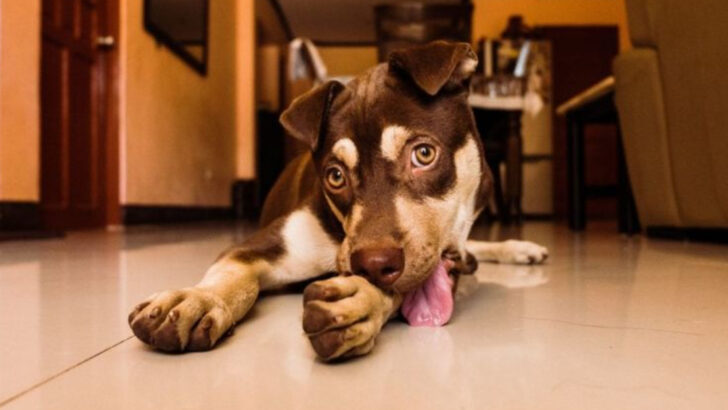That “cute” paw lick might be your dog crying out for help.
We love their floppy ears, their dramatic sighs, their little spins before bedtime. But not every quirky dog habit is harmless—or adorable. Some of the things that make us say “aww” might actually be red flags waving right in our faces.
Dogs can’t text us when they’re anxious.
They don’t write diary entries about their stress.
They act it out—with behaviors we often misread as charming.
Before you praise that obsessive tail-chasing or those clingy snuggles, take a closer look.
Your pup might not be “being silly.”
They might be begging you to understand.
Let’s break down the habits that need a second glance—because loving your dog means listening when they speak in their own language.
Excessive Tail Chasing
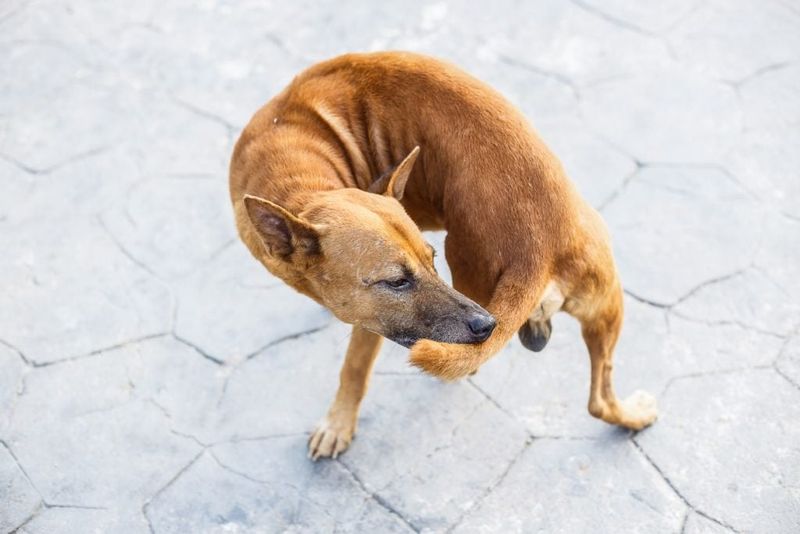
Ever seen a dog spinning in circles trying to catch its own tail? While it may seem amusing, excessive tail chasing can signal underlying anxiety or boredom. Dogs might develop this habit as a coping mechanism for stress.
Imagine being confined to one room all day; you’d need an outlet too! Another reason could be a medical issue such as fleas or infections.
If your dog frequently chases its tail, consider a vet visit to rule out health concerns. Providing mental and physical stimulation can also help curb this behavior. Don’t dismiss it as just playful antics.
Constant Licking

Dogs licking their paws or other objects may appear cute, but constant licking can indicate allergies or anxiety. This habit often develops into a compulsive behavior. Think of it as your dog’s way of trying to soothe themselves.
If your furry friend can’t stop licking, pay attention. It could be their way of telling you something’s not quite right. Has there been a recent change in their environment?
Consulting with a veterinarian can provide answers. A balanced diet and routine checks might just be the remedy for your pet’s peace of mind.
Pacing Back and Forth
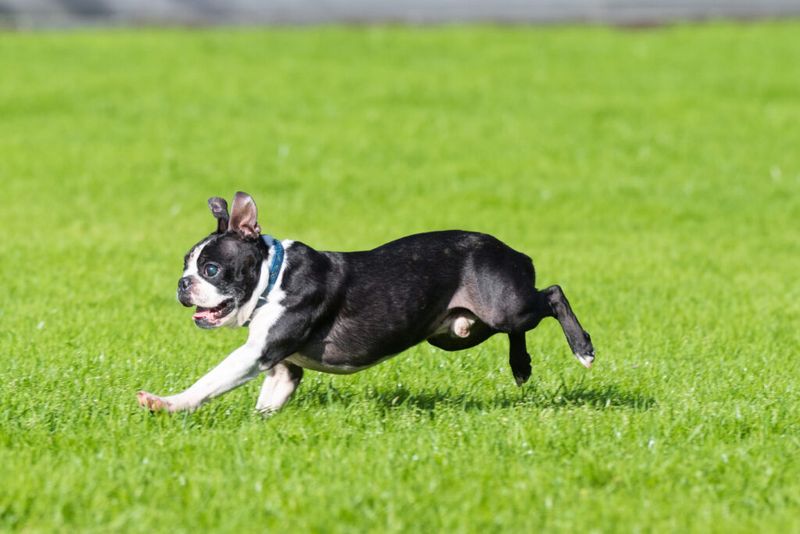
Pacing might seem like harmless wandering, but repetitive pacing can indicate stress or discomfort. Just like humans, dogs may pace when they feel restless or anxious.
Imagine a person waiting nervously for news—paced steps can ease the nerves momentarily. For dogs, it could relate to separation anxiety or environmental changes.
Understanding your dog’s routine and any alterations in their environment can help. Providing comfort, consistent schedules, and sometimes professional training could alleviate the root cause. If pacing persists, a veterinarian’s guidance may be necessary to explore underlying issues.
Excessive Barking
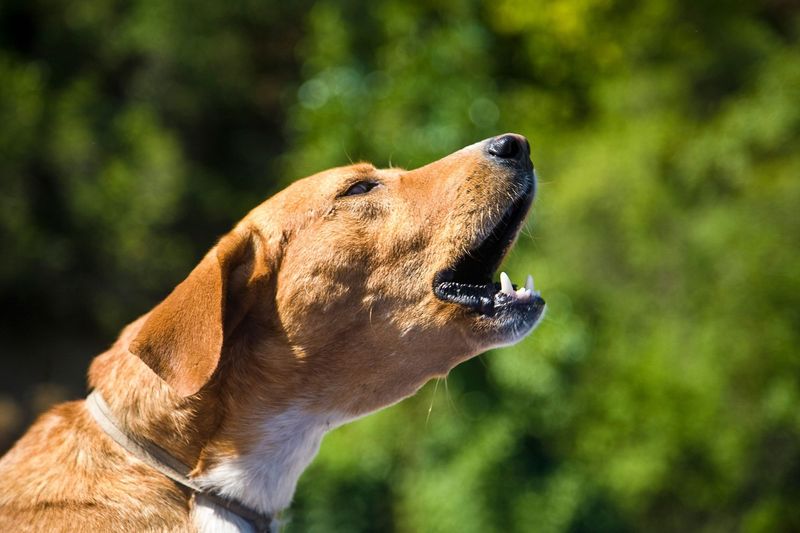
Barking is a dog’s natural way of communicating, but excessive barking may hint at something more. A dog barking non-stop might be expressing fear, loneliness, or territorial behavior.
Consider the cues around them. Is there a particular trigger causing the noise? Identifying patterns can provide insights into their distress.
Addressing this behavior might involve training to reduce triggers or creating a more secure environment. Sometimes, medical issues can also lead to increased barking. Consulting with a professional can develop a plan to address both behavioral and potential health concerns.
Whining and Whimpering

The soft whines of a dog may tug at your heartstrings, but they can be a cry for help. Dogs whine to express everything from excitement to discomfort or anxiety.
Think about the times when your dog whines. Are they alone, hungry, or in pain? Identifying the reason behind the whimpering can help you address their needs.
Sometimes, it might be as simple as needing more attention or exercise. If whining becomes frequent or intense, a vet can determine if there’s a medical issue at play. Understanding the cues can lead to a happier pet.
Destructive Chewing
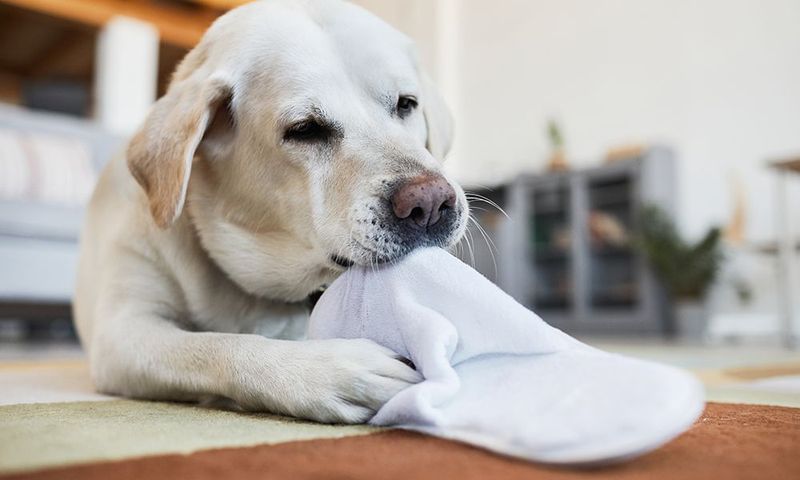
Chewing is a natural behavior for dogs, but when it turns destructive, it might be a sign of distress. Destructive chewing can result from boredom, anxiety, or even teething in younger dogs.
Imagine being cooped up with nothing to do. Chewing becomes an outlet for pent-up energy or frustration. Identifying the cause can lead to solutions, like providing appropriate chew toys or increasing exercise.
If your dog continues to chew destructively, professional training or veterinary advice may be necessary. This behavior shouldn’t just be seen as mischief; it might be a plea for help.
Panting Excessively

Panting is normal for dogs, especially when they’re hot or excited. However, excessive panting in calm and cool conditions can signal stress, pain, or underlying health issues.
Picture yourself feeling anxious; sometimes, your breath quickens. Dogs are no different. If your dog’s breathing seems unusual, take note of their environment and recent activities.
Consulting with a vet will provide clarity and help rule out medical conditions. Sometimes, simply adjusting the room temperature or reducing stressors can make a difference. Never ignore excessive panting as it could be a sign of distress.
Hiding or Seeking Solitude

Some dogs enjoy a bit of alone time, but if your dog regularly seeks solitude, it may indicate fear or stress. This behavior can arise from changes in the home or previous traumatic experiences.
Imagine a shy person retreating to a corner at a bustling party. Dogs, too, may feel overwhelmed and seek comfort in isolation.
Identifying the cause and providing a safe, comforting space can help ease their anxiety. If the behavior persists, professional intervention might be needed to address any underlying issues. Solitude shouldn’t be mistaken for mere independence.
Loss of Appetite

A sudden loss of appetite in dogs might seem like a mere food preference, but it can signal distress. Stress, illness, or even dental issues may lead to a decreased interest in food.
Think of the times you’ve lost your appetite due to stress or illness. Dogs experience similar feelings. Observing other symptoms can provide clues to the root cause.
A vet’s examination can rule out medical concerns and suggest dietary changes if needed. Never ignore a dog’s sudden disinterest in food, as it can be a sign of something more serious.
Aggression and Growling

Aggression or sudden growling can be concerning, but it might reflect fear or discomfort. This behavior can stem from feeling threatened or protecting territory.
Think of growling as a dog’s way of setting boundaries. Understanding what triggers this response is key to addressing it.
Professional training might be required to modify aggressive behaviors, along with ensuring a safe environment for both your pet and those around it. Sometimes, underlying medical issues contribute to aggression, so consulting a vet is wise. This behavior isn’t just about dominance; it’s a form of communication.
Excessive Sleeping

While dogs love a good snooze, excessive sleep could indicate underlying issues. Stress, depression, or health problems might lead to prolonged rest periods.
Imagine feeling down and preferring to stay in bed all day. Dogs, too, might sleep more when feeling unwell.
Monitoring their activity levels and any changes in their routine can provide insights. A vet’s consultation is essential to rule out health concerns. Perhaps all they need is more engagement or a change in diet. Excessive sleeping shouldn’t be dismissed as mere laziness; it could signal distress.
Repeated Yawning
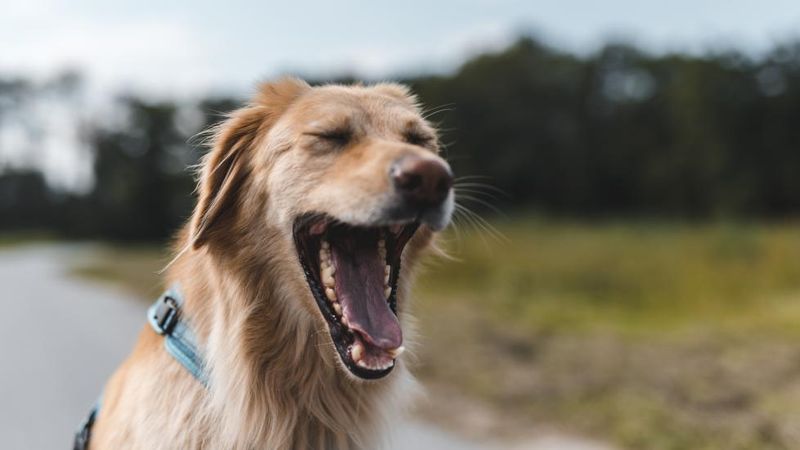
Yawning is contagious, even among dogs! But frequent yawning can be a sign of anxiety or stress. Dogs might yawn repeatedly when they’re unsure or uncomfortable.
Think of it as a stress-relief mechanism, similar to humans taking deep breaths. If your dog yawns often, observe their environment for triggers.
Addressing the root cause might involve creating a more comforting space or reducing exposure to stressors. A vet’s insight can also help determine if there’s an underlying health issue. Frequent yawning is more than just a sleepy gesture; it might reveal unease.

